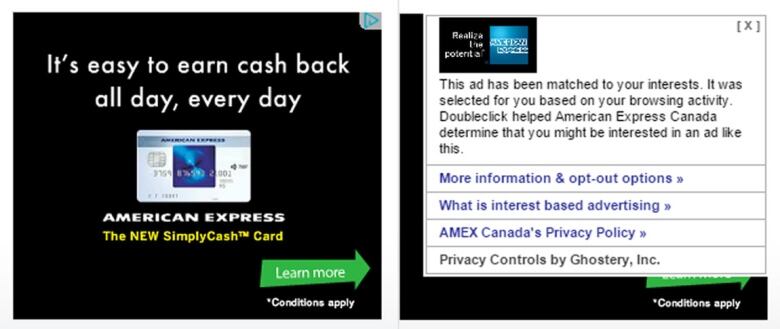'Sensitive' searches yield embarrassing targeted ads
It's not easy to opt out of online behavioural advertising, report says

Have you done searches about potentially embarrassing topics like pregnancy, divorce or liposuction? Then embarrassing targeted ads could appearon your screen as you're browsing the news.
That's one of the findings of a new study on targeted ads conducted by the Office of the Privacy Commissioner of Canada and it shouldn't be happening, the report says.
Popular websites for things such as news, job searches or shopping may show you ads based on other websites you've visited that may indicate your interests a practice called online behavioural advertising. For example, if you've been looking for a new digital camera, ads for digital cameras might show up as you're reading allrecipes.com, kijiji, or the Vancouver Sun.
Advertising firms say that benefits consumers, as it improves the chance they'll see ads they're actually interested in.
Canada's privacy commissioner issued guidelines in 2011 specifying how advertising firms can serve up targeted ads in a way that complies with Canadian privacy laws.
'Shortcomings' onsensitive topics
A follow-up study reviewed how targeted ads were being served to Canadians on 46 of the Top 500 websites in Canada over a four-month period starting last fall. It found some "shortcomings" in targeted advertising practices.
For example, while guidelines state that Canadians should have to opt-in to targeted ads on "sensitive" topics, the study found a few cases where targeted ads were served on an opt-out basis on in response to searches for pregnancy test, bankruptcy, divorce lawyer and liposuction.
"What was concerning to us was that there were any at all," says Patricia Kossein, senior general counsel and director general for the OPC.
She added that the office is writing to the ad agencies involved (Criteo, Google and AdRoll) to bring the report to their attention, and will continue the conversation with them.
The study also found that in general, it wasn't that easy for consumers to opt out of behavioural advertising.
Difficult to opt out
"Opt-out mechanisms were inconsistent, difficult to find, and difficult to exercise," Kossein said.
"These opt-out options have to be very clear, easy to understand, timely and individuals should not have to look at length or click on numerous clicks before being able to meaningfully exercise that option."
In Canada, the Digital Advertising Alliance of Canada uses the "AdChoices" icon, featuring a small "i" inside a triangle, to indicate that an ad is a targeted ad and to give consumers more information and the opportunity to opt out.

The report found that as of September 2014, 57 Canadian advertising firms had started registering for the program.
"Nevertheless, it appears that many ads may be appearing on websites frequently used by Canadians without the AdChoices icon, or any other form of notification and opt-out," the report said.
In addition to reminding advertisers of Canadian guidelines, the report recommends that websites do business with ad agencies that comply with guidelines.
Tips for consumers
The report also suggests a few ways consumers can take control of the ads they see:
- Learn to control the privacy features in your browser. Some have options to block and clear the files called "cookies" used for tracking and targeted advertising. Sometimes these are labelled as a "private" or "incognito" browsing mode.
- Install browser plug-ins or add-ons to provide additional control over the advertising you see. You may have to install a browser plug-in to make sure your "opt-out" preference is still "remembered" after you clear the cookies from your browser.
- Take advantage of opt-out procedures that are available, even if they are difficult to use.












_(720p).jpg)


 OFFICIAL HD MUSIC VIDEO.jpg)
.jpg)



























































































